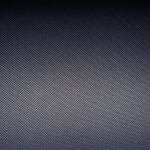Have you ever wondered how your rain jacket keeps you dry in a downpour? Water repellent fabric, like that used in outdoor gear and performance clothing, relies on a combination of hydrophobic chemical treatments and microscopic surface structures to repel water.
By altering the surface tension of the fabric, water beads up and rolls off, rather than soaking in. This sophisticated engineering allows for both water resistance and breathability, making it ideal for a range of applications.
Understanding the principles behind water repellent fabric can empower you to make informed choices about your gear and clothing, as well as appreciate the science and technology that goes into keeping you dry and comfortable in wet conditions.
Key Takeaways
- Hydrophobic chemical treatment alters fabric's surface tension
- Surface tension causes water to bead on fabric's surface
- Contact angles govern water repellent fabric efficacy
- Fabric durability impacts water repellency
Hydrophobic Chemical Treatment
When you apply a hydrophobic chemical treatment to fabric, it creates a surface that repels water by altering the way the fabric interacts with liquid. This process involves the use of advanced nano technology to achieve a high level of water resistance. The hydrophobic treatment works by forming a chemical bond with the fabric at a molecular level. This bond changes the fabric's surface energy, causing water to bead up and roll off rather than being absorbed. The use of nano technology allows for precise application of the treatment at the microscopic level, ensuring uniform coverage and optimal water repellent properties.
Chemical bonding plays a crucial role in creating a durable and effective water repellent fabric. The hydrophobic chemicals form strong bonds with the fabric, creating a protective barrier that resists penetration by water molecules. This results in a fabric that remains dry and lightweight even in the presence of moisture.
The use of nano technology further enhances the performance of the treatment by allowing for a finer and more uniform distribution of the hydrophobic chemicals on the fabric's surface. As a result, the fabric exhibits superior water repellency and maintains its breathability and comfort.
Surface Tension and Beading
To understand how water repellent fabric works, you need to grasp the concept of surface tension and how it causes water to bead on the fabric's surface. Surface tension is the result of the cohesive forces between water molecules, creating a sort of 'skin' on the water's surface. When water comes into contact with a water-repellent fabric, the surface tension causes the water to form droplets instead of spreading out, resulting in what's commonly known as the beading effect.
This wetting behavior is quantified by the contact angle, which is the angle formed between the tangent of the droplet and the surface of the fabric. A higher contact angle indicates that the water droplet is more spherical and sits atop the fabric, showcasing better water repellency. Understanding the relationship between surface tension, wetting behavior, and contact angles is crucial in the design and evaluation of water repellent fabrics.
In essence, the interaction between surface tension, wetting behavior, and contact angles governs the efficacy of water repellent fabric, allowing for the creation of materials that resist water penetration and staining.
Microscopic Structure of Fabric
The microscopic structure of water-repellent fabric plays a crucial role in determining its ability to resist water penetration and staining. Understanding the fabric structure and water resistance technology can provide insights into the functionality of water repellent fabrics.
- Fabric Structure: Water-repellent fabrics are woven or treated with a special coating to create a barrier against water. The tightness of the weave and the composition of the fibers impact the fabric's ability to repel water.
- Microscopic Coating: Some water-repellent fabrics have microscopic coatings that create a surface tension, causing water to bead and roll off the fabric instead of being absorbed.
- Hydrophobic Properties: The fabric structure is designed to have hydrophobic properties, meaning it repels water molecules. This is achieved through the arrangement of fibers and the application of water-resistant coatings.
- Surface Roughness: The microscopic texture of the fabric's surface also influences its water resistance. A rough surface can create pockets of air, reducing contact with water and enhancing repellent properties.
Understanding the intricate fabric structure and the technology behind water resistance provides a deeper appreciation for the science behind water-repellent fabrics.
Durability and Longevity
Achieve water repellency in fabric by considering its durability and longevity. The wear and tear of everyday use can significantly impact the fabric's lifespan. To maintain water repellency, it's crucial to choose fabrics with high weather resistance and fabric integrity.
Look for fabrics that can withstand prolonged exposure to various weather conditions without compromising their water repellent properties. Additionally, consider the durability of the water repellent treatment itself. Over time, the effectiveness of the treatment can diminish, leading to a decrease in water repellency.
Select fabrics with durable water repellent (DWR) treatments that are designed to withstand multiple washes and prolonged use while retaining their effectiveness. By prioritizing durability and longevity in water repellent fabrics, you can ensure that they continue to repel water effectively, even after extended periods of use and exposure to different environmental conditions.
Breathability and Moisture Management
Now, let's explore how water repellent fabric manages to keep you dry while still allowing your body to breathe. Understanding the science behind fabric breathability is key to appreciating its moisture management capabilities.
Fabric Breathability Explained
To ensure optimal comfort, water repellent fabric allows sweat to escape through the material, maintaining breathability and effective moisture management.
The fabric's breathability is essential for keeping you dry and comfortable, especially during intense physical activities. Here's why fabric breathability is crucial:
- Moisture Transport: Water repellent fabric wicks moisture away from your skin, allowing it to evaporate quickly, preventing you from feeling damp and uncomfortable.
- Air Circulation: The fabric's construction promotes air circulation, allowing fresh air to reach your skin and carry away moisture, keeping you cool and dry.
- Temperature Regulation: Breathable fabric helps regulate your body temperature, preventing overheating during physical exertion.
- Comfort: By allowing sweat to escape, breathable fabric keeps you comfortable and focused on your activities.
Managing Moisture Effectively
To effectively manage moisture, water repellent fabric allows sweat to escape through the material, maintaining breathability and ensuring comfort during physical activities. This is achieved through a combination of moisture-wicking properties and water resistance.
Moisture-wicking refers to the fabric's ability to pull sweat away from the skin to the outer surface, where it can evaporate more easily. Meanwhile, water resistance prevents external moisture, such as rain or splashes, from penetrating the fabric.
Maintenance and Care Tips
Proper maintenance of water repellent fabric requires regular cleaning and reapplication of a waterproofing treatment. Follow these tips to ensure the longevity and effectiveness of your water repellent fabric:
- Washing Instructions: Machine wash with a gentle detergent and avoid using fabric softeners as they can degrade the water repellent coating. Opt for a gentle cycle and rinse thoroughly to remove all soap residue.
- Stain Removal: Treat stains promptly with a gentle detergent or a specialized stain remover that's suitable for use on water repellent fabric. Avoid harsh scrubbing, as it can compromise the fabric's water repellent properties.
- Storage Tips: Ensure the fabric is completely dry before storing to prevent mildew or mold growth. Store in a cool, dry place away from direct sunlight to maintain the fabric's integrity.
- Reapplication of Waterproofing Treatment: Over time, the water repellent coating may wear off. Reapply a waterproofing treatment following the manufacturer's instructions to restore the fabric's water repellency.
Adhering to these maintenance and care tips will help retain the water repellent properties of the fabric, ensuring its continued effectiveness in repelling water and maintaining its quality.
Environmental Impact and Sustainability
Regular maintenance and responsible disposal of water repellent fabrics can minimize their environmental impact and support sustainability efforts. When considering the environmental impact, it's important to assess the overall sustainability impact and environmental benefits of water repellent fabrics. The table below summarizes the key points related to the environmental impact and sustainability of these fabrics.
| Environmental Impact | Sustainability Impact | Environmental Benefits |
|---|---|---|
| Chemical usage and waste | Longevity of fabric | Reduction in water usage |
| Disposal of PFCs | Durability | Energy savings |
| Microplastic pollution | Recycling potential | Reduced need for detergents |
Understanding the environmental impact of water repellent fabrics allows for informed decision-making when it comes to usage and disposal. By focusing on responsible maintenance, including proper cleaning and repair, and considering sustainable alternatives, you can minimize the negative environmental impact while enjoying the benefits of water repellent fabrics. It is crucial to continue exploring innovative solutions to reduce the environmental footprint of these fabrics to support long-term sustainability efforts.
Applications and Future Developments
You can explore various applications and future developments of water repellent fabrics. The ongoing advancements in water repellent fabric technology have paved the way for a wide range of industrial uses. Additionally, innovative performance enhancements continue to drive the evolution of these fabrics.
- Outdoor Apparel: Water repellent fabrics are extensively used in outdoor apparel such as jackets, pants, and footwear, providing protection against moisture and ensuring comfort during outdoor activities.
- Medical and Healthcare Industry: Advancements in water repellent fabrics have led to their use in medical and healthcare settings, where protective clothing and equipment require reliable water resistance.
- Automotive Sector: Water repellent fabrics are being incorporated into the automotive industry for applications such as seat covers and interior upholstery, offering durability and easy maintenance.
- Future Developments: The future holds promise for further innovations in water repellent fabrics, including enhanced breathability, eco-friendly solutions, and improved durability to meet the evolving needs of various industries.
As advancements continue, water repellent fabrics are poised to play a pivotal role in diverse industrial applications while driving future innovations in performance and sustainability.
Frequently Asked Questions
Can Water Repellent Fabric Be Used for Outdoor Furniture or Other Non-Clothing Applications?
Yes, water repellent fabric can be used for outdoor furniture and other non-clothing applications. It is ideal for industrial applications due to its ability to repel water and resist stains, providing durability and protection.
How Does Water Repellent Fabric Affect the Breathability of the Material?
Water repellent fabric strikes a delicate balance between repelling water and maintaining breathability. Thanks to advancements in fabric technology, innovative materials and coatings allow for improved breathability while effectively repelling water, ensuring comfort and protection.
Are There Any Potential Environmental Concerns Associated With the Use of Hydrophobic Chemical Treatments on Fabrics?
When considering the environmental impact of water-repellent fabric, it's crucial to explore chemical alternatives. Assessing the potential consequences of hydrophobic chemical treatments on fabrics is essential for sustainable and eco-friendly material production.
How Long Does the Water Repellent Treatment Typically Last on Fabric, and How Can It Be Maintained?
To maintain water repellent fabric, regularly apply a waterproofing treatment. Check the manufacturer's guidelines for the specific product's durability. Reinforce the treatment by washing and drying the fabric appropriately, as improper care can diminish its water repellency.
Are There Any Ongoing Developments in Water Repellent Fabric Technology That May Improve Its Performance or Sustainability in the Future?
In the future, advancements in water-repellent fabric technology are likely to focus on enhancing performance and sustainability. Innovations may include eco-friendly treatments, improved durability, and more effective repellent mechanisms to meet evolving consumer and environmental demands.
- Tetron Rayon Fabric: Features and Applications - June 17, 2025
- Tetron Cotton Fabric: Uses and Benefits - June 17, 2025
- Exploring Different Types of Tetron Fabric - June 17, 2025







